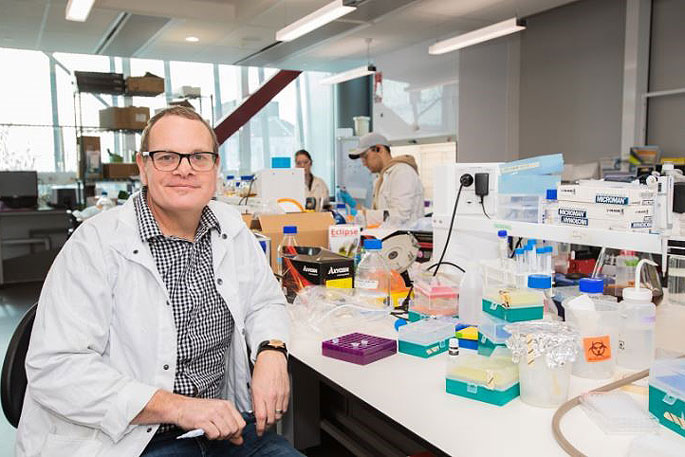A joint University of Canterbury and ESR research team is investigating whether a new enzyme treatment could help solve the global problem of antibiotic resistance.
University of Canterbury Biochemistry Professor Renwick Dobson and ESR microbiologist Dr Craig Billington have developed an enzyme biotechnology that could help address the need for new ways to kill bacteria that are becoming resistant to antibiotics.
The World Health Organisation says antibiotic resistance is one of the biggest threats to global health, food security, and development today and alternative methods for controlling bacterial pathogens are urgently needed.
Professor Dobson says they looked at bacteriophages (phages) - a virus that infects bacteria but is harmless to humans.
'The rationale is if the phage can kill bacteria, maybe we can explore the way they do this so that we can do it too.”
ESR Science Leader Dr Craig Billington says the potential opportunity for New Zealand from the enzyme biotechnology was significant.
'Gaining further knowledge around how the endolysins work could provide the opportunity to develop a biotech industry in New Zealand that can treat specific infections both in Aotearoa and overseas.”
Previous findings have shown that you can treat what is called 'Gram-positive” bacteria with a specific endolysin.
An endolysin is an enzyme, or protein, that is produced by phages and eats away at the walls of a bacteria cell.
There is another group of bacteria called Gram-negative bacteria. In addition to having a thick cell wall and an inner cell membrane, these bacteria also have an outer membrane, which means when they are treated with endolysins they can't get through the outer membrane to access the cell wall. Professor Dobson says this is the basis of their research.
'We're trying to engineer endolysins so they can penetrate the outer membrane and get into the cell wall.”
Carbapenems are the last line of antibiotics that can be used against Gram-negative bacterial infections. Carbapenem resistance in this group of bacteria (also called CPE) is rising rapidly worldwide leaving few, or in some cases no, treatment options remaining. These infections can cause urinary tract, respiratory, wound, and blood infections.
Globally, 4.5 million CPE infections lead to hospitalisation each year. The rate of CPE infections in Aotearoa New Zealand also continues to rise.
Professor Dobson says CPE bacteria are really difficult to treat and they are now resistant to all antibiotics, which could lead to issues particularly for immuno-compromised and older people.
Some antibiotics – such as penicillin – are made up of small molecules that persist. This is part of why we have antibiotic resistance.
Professor Dobson explains, 'residual antibiotics in the environment around the world means we are being continually exposed to low concentrations of these antibiotics. The bacteria that live with us are seeing these molecules and developing abilities to metabolise and become resistant to them.”
The advantage of using endolysins to treat bacteria instead is that they are relatively unstable, meaning they do their job but they don't persist in the environment in the way other antibiotics do.
'If you have antibiotics everywhere in the global ecosystem, then you're going to get resistance to it. Then none of the antibiotics work and we get the problems we're having now, where we are increasingly having infections that we can't treat. That's only getting worse.”
Professor Dobson hopes to gain knowledge around how the endolysins work and develop a biotech industry in New Zealand that can treat specific infections both in New Zealand and overseas.



0 comments
Leave a Comment
You must be logged in to make a comment.